Georgia WWSCAN biweekly update
Welcome to the bi-weekly update for WWSCAN partners in Georgia! All samples provided up through 4/10/23 have been processed and data are on the site at data.wastewaterscan.org.
If you notice any bugs on the new site or have any comments about it, please continue to send your feedback via email Amanda Bidwell at albidwel@stanford.edu. Thank you as always for your partnership!
COVID-19
SARS-CoV-2 and Variants
SARS-CoV-2 N gene RNA concentrations at Georgia sites are comparable to two weeks ago, and remain at relatively low levels similar to the previous low levels in Fall 2022. It is nice to see levels of SARS-CoV-2 RNA stay relatively low in wastewater recently! Values range from approximately 40,000 copies per gram and 250,000 copies/g over the past couple of weeks. Click on the charts to visit the website and interact with the charts directly.
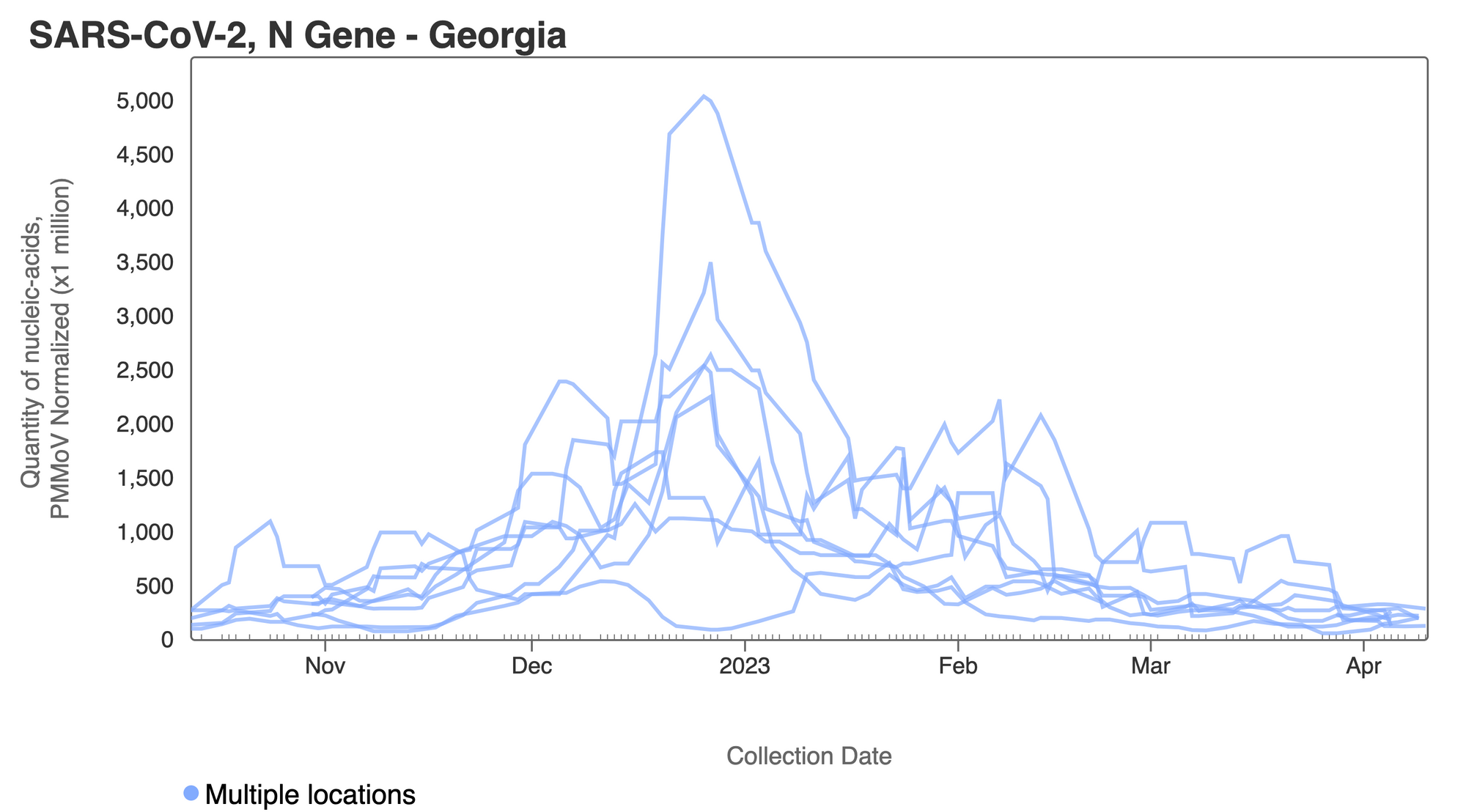
Other Respiratory Viruses
IAV, IBV, RSV, and HMPV
Influenza A (IAV) RNA concentrations have dropped significantly, and in the last two weeks IAV was only detected at one site in Georgia (intermittent detection at South River). When samples are non-detect, this means that the amount of viral RNA in the wastewater is below the limit of detection of our methods. This means that there are likely very few people shedding IAV into wastewater in these communities.
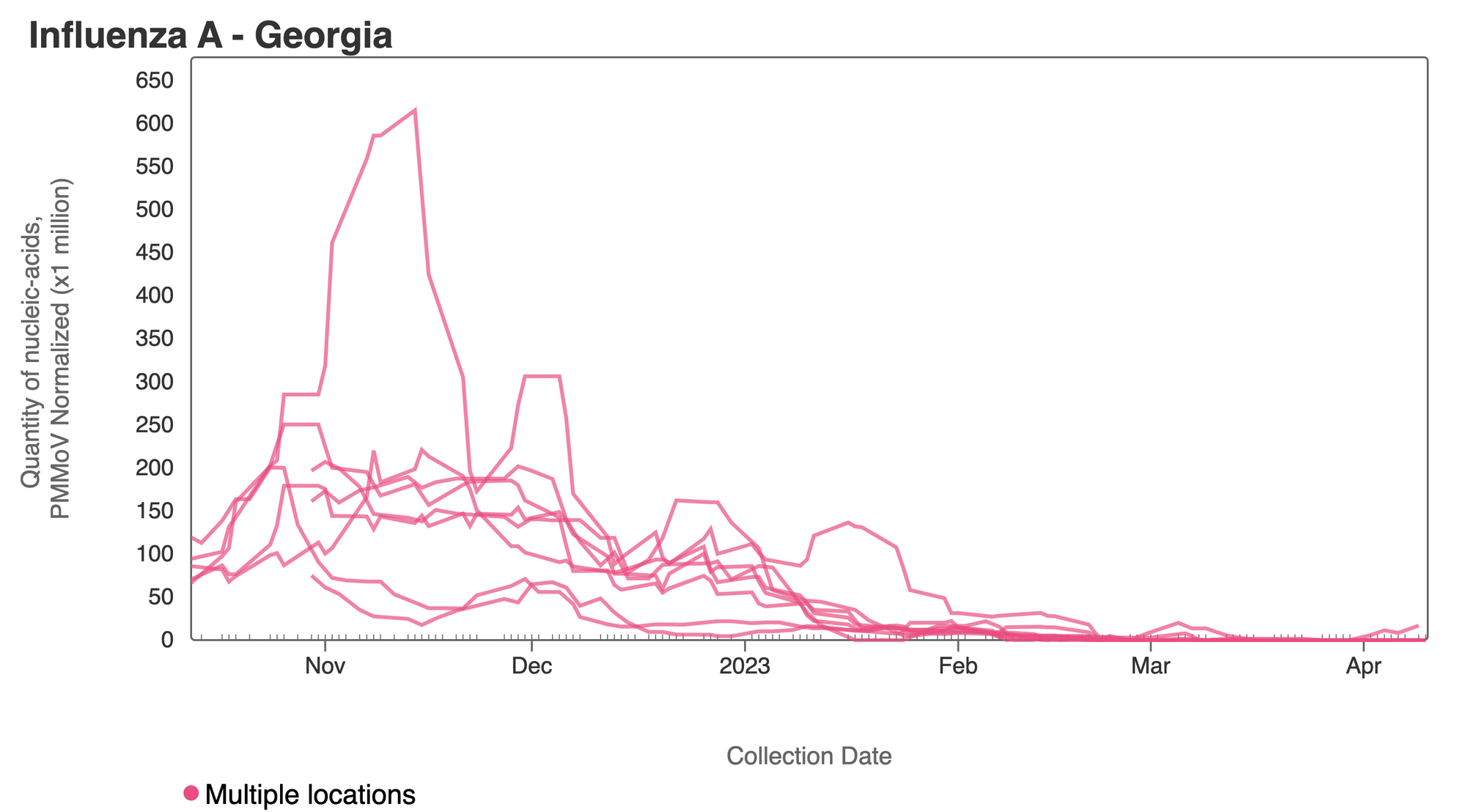
Influenza B (IBV) RNA continues to be sporadically detected at Georgia plants, with some increases in the the rate of detection. While concentrations at some sites have increased, concentrations remain low (less than 11,000 copies/g). IBV has not been detected over the past two weeks at Johns Creek, Little River, Utoy Creek, and Columbus. A heat map is shown below of the IBV RNA concentrations at the Georgia plants.
This is a useful format to view results when there are low levels and sporadic detection as is now the case for IAV and RSV, but we'll use IBV as the example for this plot today. Each plant is represented by a row (y-axis), and dates are shown along the x-axis. Blue indicates a non-detect and darker orange/red is proportional to concentration with the highest values being the darkest. A white means no sample was collected.

RSV RNA concentrations have dropped quite a bit over the month of March, with sporadic detections at most sites in the last two week in concentrations of less than 20,000 copies/gram at all sites. The sites at which RSV has not been detected include College Park, Little River, and Utoy Creek.
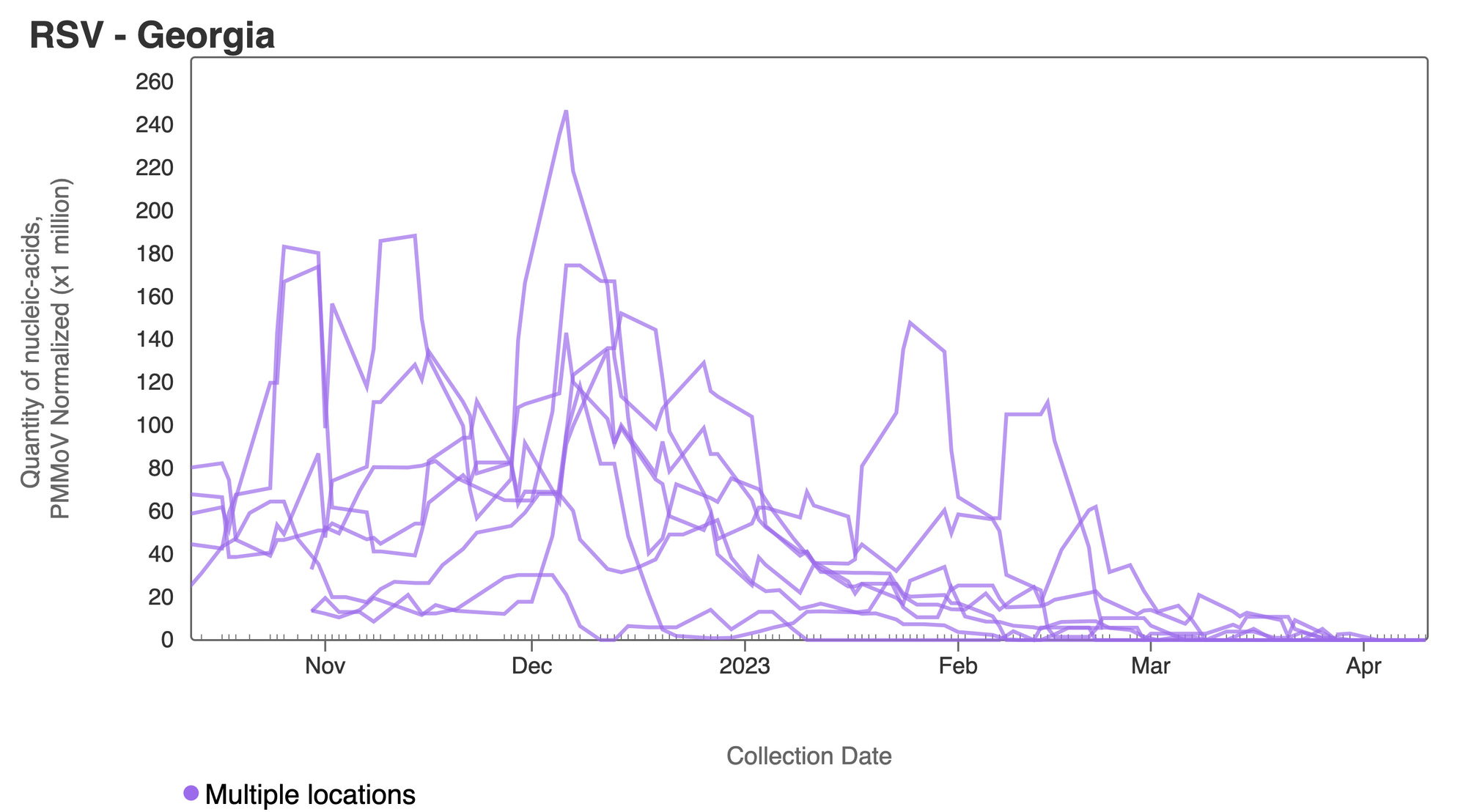
HMPV (human metapneumovirus) RNA concentrations of HMPV have not dropped as the other respiratory viruses have, and have remained constant at a number of plants over the last 2 weeks. Samples from the majority of the plants have concentrations of less than 60,000 copies/g.

Norovirus
Assay detects human norovirus GII
Norovirus GII RNA concentrations have been relatively flat to slightly increasing across sites for the past two months. Concentrations for Georgia plants are between 5,000,000 - 25,000,000 copies/gram. A chart of all the Georgia sites together is shown below.
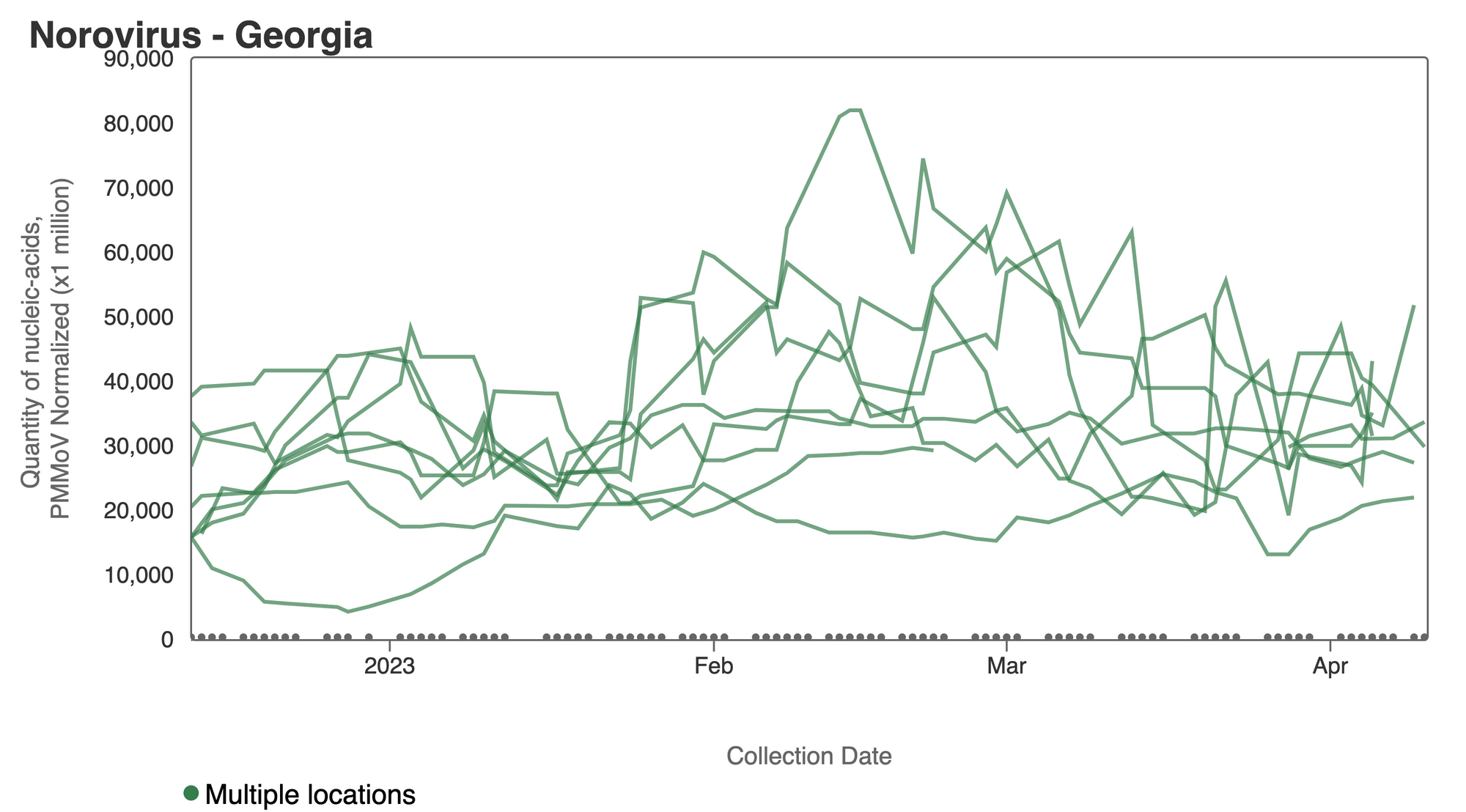
Mpox
Results have been non-detect for mpox in all Georgia plants since Dec 2022. This heat map shows all the data we have collected for all Georgia sites as a row and each date as a column. Again, the color blue means the sample was non-detect for mpox DNA and the colors get darker with higher concentrations.
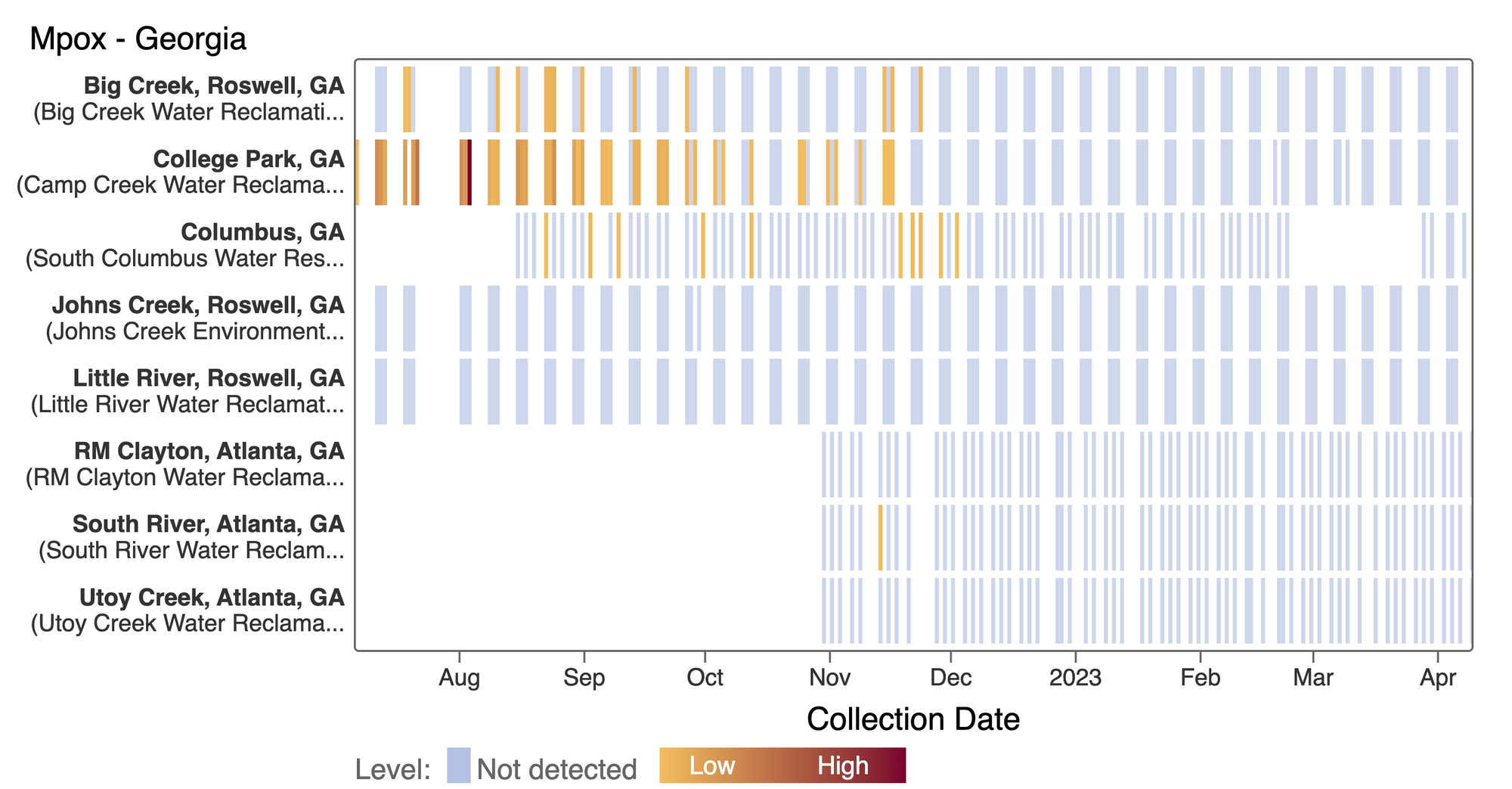
Related News
Please join us for the next monthly WastewaterSCAN Stakeholder Meeting TODAY, April 14 at 12 PM EST.
Zoom Link: https://stanford.zoom.us/j/95291778171?pwd=M1d5Q3lEL0hHME0ybVhhRUpQNWZZUT09
